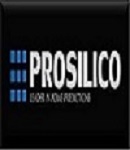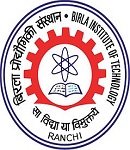Day 1 :
Keynote Forum
Paramjeet Kaur
Food and Drug Administration, USA
Keynote: Biowaiver approaches for generic drug products in the US: Case studies
Time : 10.00-10.35

Biography:
Paramjeet Kaur is a Senior Reviewer at the Division of Bioequivalence II, Office of Generic Drugs, CDER, FDA. She reviews the bioequivalence studies, in vitro dissolution data, and bioanalytical method validations submitted in support of approval of generic drug applications. She has also written several bioequivalence study design recommendations for specific drug products. She received her Bachelor in Pharmacy from the Banaras Hindu University, India, and Doctorate in Industrial Pharmacy from St. John’s University, USA. Her current research interests include pharmacokinetics, use of pharmacokinetic modeling and simulation to predict bioequivalence, and in-vitro in-vivo correlations.
Abstract:
The bioequivalence (BE) evaluation is a critical component of the Abbreviated New Drug Application (ANDA) review process. For systemically acting generic oral dosage forms, the BE is often demonstrated through in vivo pharmacokinetic studies by comparing the rate and extent of absorption of active ingredient or moeity from generic drug product with that of the corresponding reference listed drug product. Per criteria set forth in 21 CFR § 320.22, the United States Food and Drug Administration (U.S. FDA) may grant waiver of in vivo BE study requirements (biowaiver) for generic drug products, if in vivo bioavailability or bioequivalence of the drug product is self-evident. The biowaivers may also be granted for solid oral dosages and other dosage forms administered via a different route of administration (e.g. azacitidine injectable suspension, acyclovir topical ointment), using in vitro tests to assess bioequivlaence. This presentation will discuss about recently implemented in vitro BE approaches for different dosage forms, waiver of in vivo BE studies for non biostudy strengths, and biowaivers in the presence of an established in-vitro in-vivo correlation (IVIVC) along with the case studies from ANDA submissions.
Keynote Forum
Jim Jingjun Huang
Ascendia Pharmaceuticals, USA
Keynote: Rational design of amorphous solid dispersion for solubility and bioavailability enhancement
Time : 10:35-11:35

Biography:
Jim Jingjun Huang received his PhD in Pharmaceutics from the University of the Sciences in Philadelphia under Joseph B. Schwartz. He has more than 15 years of experience in preclinical and clinical formulation development and commercialization of a variety of oral and parenteral dosage forms during his tenure at Ascendia, Roche, AstraZeneca, Baxter and Wyeth. He is currently CEO/CSO of Ascendia Pharmaceuticals. His publications include studies on solubilization and drug delivery technologies of poorly water soluble drug. He has served as expert reviewer for several peer-review international journals. He is a member of American Association of Pharmaceutical Scientists (AAPS) and American Chemical Society (ACS).\r\n
Abstract:
As a result of research efforts, solid dispersion dosage forms have been applied to several commercial pharmaceutical products. It is expected that with better understanding of SD manufacturing process and molecular structure associated with its in vitro/in vivo performance, there will be more SD dosage forms introduced into the market in the future. The aim of this presentation is to evaluate effects of formulation and process technology on molecular dispersibility in solid dispersions (SD). Solid dispersions prepared by different methods were characterized. A method was developed based on regular solution and Flory-Huggins theories to calculate drug-polymer interaction parameter in solid dispersion systems. A synergic effect of combined polymers on drug molecular dispersibility in solid dispersions was observed. Process methodology was also found to play an important role in formation of amorphous SD. Since drug molecular dispersibility in combined polymer is a result of interplay between thermodynamic and kinetic factors, drug molecular dispersions are thermodynamically metastable systems. To explore those supersaturation systems for use in drug delivery of poorly water soluble drugs, it is critical to balance drug-polymer interactions and matrix glass transition point and to consider a process technology with a fast solidification rate during formulation and process development of amorphous SD.
- Track 3: Contemporary Challenges of Drug Design, Discovery and Development
Track 7: Bioavailability, Bioequivalence and Drug Product Selection
Track 11: Clinical Pharmacology and Therapeutics
Track 12: Study Designs

Chair
Paramjeet Kaur
U.S. Food and Drug Administration, USA

Co-Chair
Aydın Erenmemisoglu
Novagenix Biyoanalitik Ä°lac , Turkey
Session Introduction
Keith Gallicano
Novum Pharmaceutical Research Services, USA
Title: Bioequivalence of topical corticosteroids: Design and data analysis challenges with the vasoconstrictor assay
Time : 11:50-12:20

Biography:
Keith Gallicano, PhD (Chemistry) is Vice President, Scientific Affairs, Novum Pharmaceutical Research Services. He has 27 years of diverse experience working in the pharmaceutical field, including various positions in government (Senior Research Scientist, Health Canada), academia (Assistant Professor of Medicine, University of Ottawa; Adjunct Professor of Pharmacology and Therapeutics, University of British Columbia), pharmaceutical manufacturing industry (Director, Biopharmaceutics, Watson Laboratories, Inc.) and the CRO service industry (Vice President, Research and Development, Axelson Biopharma Research, Inc.).
Abstract:
The vasoconstrictor assay (VCA) method published in FDA’s 1995 Guidance on bioequivalence of topical dermatologic corticosteroids is currently the only pharmacodynamic method approved by FDA for demonstrating bioequivalence of topical corticosteroid products (gels, creams, lotions, ointments, foams, tapes and sprays). The Guidance recommends a pilot dose duration-response study to determine the appropriate dose duration for use in the pivotal study. In general, evaluation of bioequivalence by the VCA method has worked well over the last 20 years, but there remain several challenges in design and data analysis. For example, for the dose-response study the fit of the simple Emax model is not always optimal with low potency products, with products that show delayed vasoconstrictor (skin blanching) response, or with subjects that have low skin blanching (low Emax); for the pivotal study a too short or very long ED50 duration products can pose operational challenges. Furthermore, the sample size recommendation in the Guidance of 40-60 qualifiers for pivotal studies may be too low for those products that show high intra-subject variability in vasoconstrictor response. Successful bioequivalence studies depend on the clinic’s ability to recruit a fair-skinned population of subjects that show high and consistent skin blanching to even low potency topical steroids so that within-subject variability in vasoconstrictor response is minimized. This presentation will discuss approaches for minimizing operational issues, estimating sample size, and evaluating reliability of blanching profiles for pivotal studies and will provide examples of design and data analysis challenges for dose-response and pivotal studies.

Biography:
He completed his PhD in pharmacokinetics/biopharmaceutics in Uppsala university in1997. He worked as a Senior research scientist and principle scientist at AstraZeneca Sodertalje (1997-2012). Presently he is a CEO, founder and method developer at PROSILICO.
Abstract:
Background: Prediction of in-vivo permeability (Pe), solubility, BCS-classing, food interactions, fraction absorbed (fa) and oral bioavailability(F) from in-vitro and animal data is a challenge, especially for compounds with low/moderate Pe, efflux and/or high lipophilicity/low solubility. For such compounds, in-vivo prediction from preclinical data is generally poor/uncertain and sometimes impossible. Thus, improvements are required. Methods: With extensive, diverse datasets (log P -9 to 9), new algorithms and various computational chemistry methods (including machine learning) we have developed and validated prospective in-silico prediction models (no retrospective data fitting) for the parameters described above. Results & Discussion: Models for fa and F (including compounds with low Pe, strong efflux, very low solubility, extensive gut-wall and hepatic extraction) showedQ^2 of 0.77 and 0.55 and median prediction errors of 1.1- and 1.4-fold, respectively. In direct comparison, the models outperformed lab methods. For the 100 compounds with lowest solubility (including albendazole, danazol, loperamide, lovastatin, ketoconazole and troglitazone), 74% correct in-vivo BCS-classing and 12% average absolute prediction error for fa was obtained. The mean prediction error for AUC-changes with food was 1.4-fold. Conclusion: The new in-silico models and algorithms enable improved and simplified prospective predictions of in-vivo Pe, fa, solubility, BCS-classing, food interactions and F. Benefits include reduced and defined uncertainty, reduced time and costs, and frontloaded and improved decision-making.
Dongmei Zhao
Shenyang Pharmaceutical University, China
Title: Discovery of novel scaffolds for p21-activated kinase 4 inhibitors targeting C- terminal
Time : 13:50- 14:20
Biography:
She is a Professor in Shenyang Pharmaceutical University.
Abstract:
p21-activated kinases (PAKs) are a family of serine/threonine kinases that act downstream of Rho GTPases, Rac and Cdc42. PAKs play a critical role in cytoskeletal organization, cell cycle progression, migration and invasion, and cell survival. PAK4, as the principal member of group II PAKs, mainly regulate its functions via a kinase domain in the C terminal, where all of the existing PAK4 inhibitors target. In this study, a series of novel 1-phenanthryl- tetrahydroisoquinoline analogues have been designed and synthesized as a novel class of small-molecule PAK4 inhibitors to fit into the cavity of PAK4. All of the target compounds were evaluated for their in vitro PAK4 inhibitory activities and antiproliferative activities. Its affinity to C-termini of PAK4 was confirmed by BSA (Biotin-Streptavidin assay). Furthermore, this compound inhibits the invasion and migration of A549 tumor cells by regulating PAK4-Lim domain kinase 1 (LIMK1)-Cofilin signaling pathways in vitro, and exhibits anti-tumor activity in vivo in the A549 tumor xenografts model.
- Track 1: Emerging Bioavailability and Bioequivalence Studies
Track 5:Managing BA/BE Studies
Track 9: Need for Conducting BA/BE Studies
Track 13: Factors Affecting Bioavailability

Chair
Paramjeet Kaur
U.S. Food and Drug Administration, USA

Co-Chair
Aydın Erenmemisoglu
Novagenix Biyoanalitik Ä°lac , Turkey
Session Introduction
Wenzhan Yang
Astra Zeneca Pharmaceuticals LP, USA
Title: Optimizing formulation to maximize drug absorption from solution formulations
Time : 14:20-14:50
Biography:
Wenzhan holds a PhD. degree in Pharmaceutical Science. She has experiences in both academia and pharmaceutical industries. Wenzhan has been with AstraZeneca for about 10 years. She has worked on projects from preclinical stage through commercial products. Her current focus is on compound selection to support both infection and oncology projects from preclinical to first time in man. Her publications focuses mainly on delivering poorly soluble drugs by solubilization as well as drug delivery systems. Her research interests are in the area of solubilization, nanoparticles and targeted delivery.
Abstract:
Solution formulations are not all made equal. The type of excipients as well as the level of excipients in solutions can have either positive or negative impact on oral absorption of drug molecules. In this presentation, considerations and evaluation tools in selecting and optimizing solution formulations in order to maximize the oral absorption of drug molecules will be illustrated with case studies.
Subir Samanta
Birla Institute of Technology, India
Title: Design, synthesis and studies of delta and Cox-2 receptor specific analgesic anti-inflammatory activity of some linear and cyclic peptides
Time : 14:50-15:20

Biography:
S Samanta is Professor in the Department of Pharmaceutical Sciences and Technology, Birla Institute of Technology, Jharkhand India. He is having 29 years of teaching and research experience and presently guiding 7 PhD students. He established CADD lab for the department. He is supported by UGC-MRP project for installation of FlexX and Reaction station in Medicinal Chemistry Research Labs. His area of interest includes anti-diabetics, analgesics, anti-inflammatory agents. He has a patent on product and process on peptide based oral anti-diabetic compounds. He has number of International publications and recognition in the field of research and teaching.
Abstract:
Pain is the most common symptom for most diseases and there is an urgent need of more receptor specific, potent and safe analgesics. The present study is based on docking studies of 30 designed molecules both linear and cyclic small peptides. Using Glide software (version: 5.0), on receptor [pdb: 4COX & OPRD_HUMAN_AD_JOM-13 the ADME studies were done using QikProp (version: 3.1) software. The cyclic peptides have shown good % Human oral absorption. The toxicity studies were validated using OSIRIS Property Explorer. 14 designed ligands having best docking scores were synthesized and screened for anti-inflammatory, analgesic activity. Peripheral analgesic activity was significant in acetic acid induced writhing test in mice, for injectable compounds SSLR-9 (72% of inhibition) and SSLR-12 (61% of inhibition) while orally given compounds SSLR-12 showed good analgesic activity (45% of inhibition) compared to standard compound Aspirin (67% of inhibition). Also, injectable compounds SSLR-9 (43% inhibition) & SSLR-12 (35% inhibition) showed significant degree of anti- inflammatory activity compared to standard compound indomethacin (55% inhibition) in carrageenan induced anti-inflammatory study in rats. Thus this study infers that in the near future different combinations of amino acids will be suitable for peripheral analgesic and anti-inflammatory activity. Peptide combinations can also be attached with the non peptide NSAIDs such as indomethacin etc. and can prove to be more receptor specific, potent, and bio-friendly analgesic and anti- inflammatory agents.
Onursal Saglam
Novagenix Biyoanalitik Ilac, Turkey
Title: The bioequivalence of Citicoline 500 mg film tablet
Time : 15:35- 16:05

Biography:
Onursal Saglam has a graduated degree from Department of Mathematics of Middle East Tech University in 1996. He had special project at Computer Sciences and Statistics. He had worked for Turkish Pharmacist Association and participate number of IT project as project leader. He started to work in Novagenix as IT Manager and now he is Deputy General Manager. During his work he has participated over 550 BA/BE studies.
Abstract:
Citicoline is an essential intermediate in the synthesis of structural phospholipids of cell membrane. Citicoline is also related to acetylcholine metabolism (cholinergic action). Exogenously administered citicoline promotes rapid repair of injured cells in brain ischemia with two leading mechanisms: i) direct repair of neuronal membranes ii) reduced generation of free fatty acids. Also, citicoline downregulates phospholipases to avert apoptotic and necrotic cell death. Animal and clinical studies indicate the potential of citicoline to improve cognitive deficits, stroke rehabilitation, brain and spinal cord injuries, neurological diseases, and eye conditions. Citicoline is metabolized in the gut wall and liver. The byproducts of exogenous citicoline formed by hydrolysis in the intestinal wall are choline and cytidine. Following absorption, choline and cytidine are dispersed throughout the body, enter systemic circulation and cross the blood-brain barrier for re-synthesis into citicoline in the brain. However, in humans, plasma cytidine is converted to uridine, its circulating form, which is transformed in the brain to uridine diphosphate. The aim of the study was to evaluate the pharmacokinetics of citicoline for determining the bioequivalence, only a few methods have been publish which were only describing choline which is active metabolite of citicoline those were so far to be successful. The blood sampling was started from -48h for the clinical trial. The most feasible method was to determine the uridine levels and do base line correction for PK variables. At the end of study, the Cmax, AUC0-t and tmax had been achieved successfully.
Aydın Erenmemisoglu
Erciyes University, Turkey
Title: Possıble mıstakes and manıpulatıons ın bıoequıvalency trıals
Time : 16:05- 16:35

Biography:
Aydin Erenmemisoglu has graduated from Ankara University Medicine Faculty in 1985. He held title of Assistant Professor at Erciyes University, Medicine Faculty, Pharmacology Department in 1995 and Professor in 2001. He is Principal Investigator of Erciyes University DEKAM GCP Centre and has completed 1400 BA/BE studies as well as Phase I & II.
Abstract:
Sponsors are spending billions of money to register their drugs. There are number of GCP, bioanalytical centers and CRO’s around the world in that business. BE/BA trials are designed and done with upmost care to protect subjects welfare and safety. When the outcome is positive, this is mostly product developer’s success. If the trial fails then everybody blames the Principal investigator about the unwanted results. The clinical center staff starts troubleshooting and tries to find-out possible mistakes through the clinical trial. They check all the quality records, the video recordings and monitoring reports. Are they looking right places? Sometimes the answer is yes. But there are some special cases that come out with surprising consequences. Those cases demonstrate that scientifically perfect designs could be ruined with uncalculated behaviors of subjects or staff. The clinical sites and Principal Investigators can avoid such consequences with right precautions and taking measures with root cause analysis. Those possible techniques could be documented and be part of quality system of GCP center.
Marlene Teresa Llópiz-Avilés
Harvard University School of Public Health, USA
Title: Mexico and Brazil: Lands for Bioequivalence testing and generic product registration IFaB as a choice for your trials in Mexico and Brazil
Time : 16:35- 17:05

Biography:
Marlene Teresa Llópiz-Avilés holds a BA from Austin College, a MD degree from Universidad Anahuac and a MPH from Harvard University School of Public Health. She has worked in the clinical research arena for over 25 years and is currently CEO at IFaB. She has published several papers in reputed journals and has served on several pharmaceutical boards including AMEIFAC (Association of Medical Specialists in the Pharmaceutical Industry)as its President, IFAPP (International Federation of Associations of Pharmaceutical Physicians), as its Secretary General, and CANIFARMA (Chamber of Commerce for the Pharmaceutical Industry) – as a member of its board, as well as Chair of the Mexican Chapter of ACRP (Association of Clinical Research Physicians) in the USA.
Abstract:
Investigación Farmacológica y Biofarmacéutica, SAPI de CV (IFaB) is a market-leading clinical research organization (CRO–Authorized Third Party) that focuses on bioavailability and bioequivalence testing studies in the Mexican healthcare market. The company is comprised by a group of highly qualified and renowned professionals in various areas of expertise related to the pharmaceutical industry who have worked together as a team for over ten years. IFaB is certified by the Mexican Federal Commission for the Protection against Health Risks (COFEPRIS–Ministry of Health) and the Brazilian National Health Advisory Agency (ANVISA) - the only Mexican company to have this certification. The company´s client base includes first-rate international and local pharmaceutical companies. Over the past 10 years, the bioequivalence market has witnessed a boom derived from new regulation aiming to renewal legacy drug licenses in Mexico. It is estimated that every year 300-350 bioequivalence studies are conducted, which represent a total market of $40 million dollars. With IFaB´s dual strategy, the Brazilian and Mexican regulatory requirements are fulfilled, and with this pharmaceutical companies can obtain licenses in Brazil, Mexico, Chile, Colombia, Peru, and several Central American countries–covering approximately 80% of the Latin American market with just one BE study. The pharmaceutical industry is experiencing significant changes: Biosimilar products provide cost savings, increases in patient access and innovations. The company believes that it can add value by developing new and complex products that can differentiate IFaB from competitors and increase its portfolio services with oncologicals, inhalables–combining complex drugs with sophisticate medical devices, patches–innovative alternative for controlled drug delivery through the skin, and biotechnological products including monoclonal antibodies, etc.


